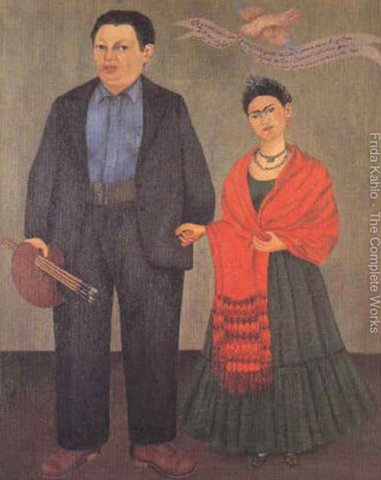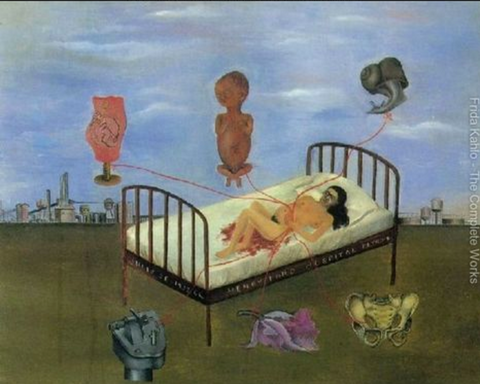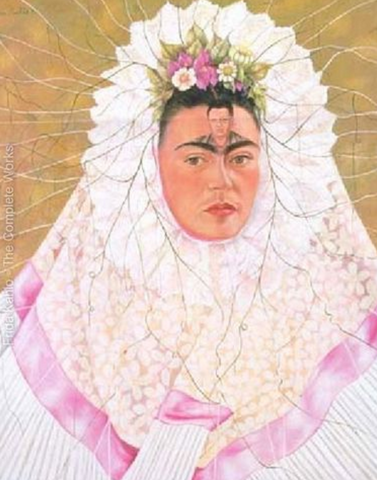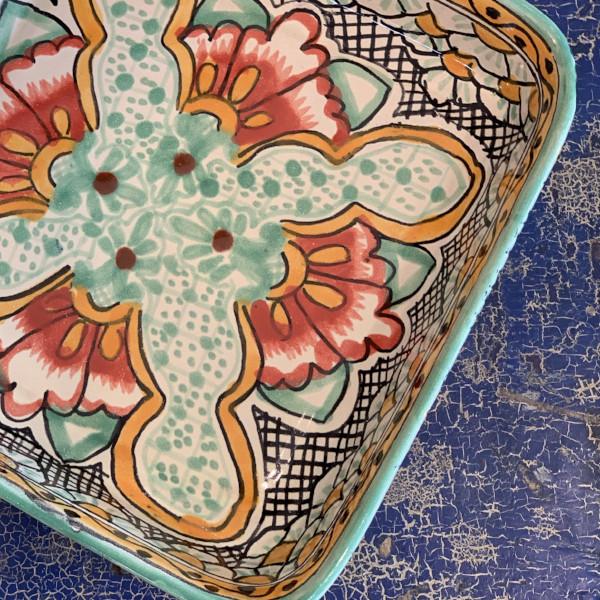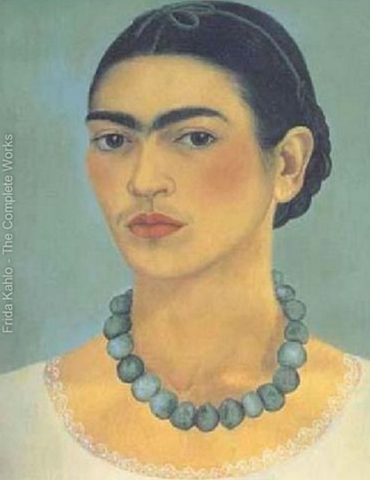
The mere mention of the Mexican artist, Frida Kahlo, born on July 6, 1907, conjures iconic images for many people. Her bold self-portraits and the images from the movie starring Salma Hayek, prompt many casual observers to feel quite familiar with her. We visualize strong images that convey her dark-haired beauty and love for Diego Rivera, but we also remember jarring depictions of exposed internal organs, or nails pricking much of her body. We know she had a challenging life, that she loved her native Mexico and that she is one of the most iconic feminists in the world. But did you know these surprising details about her life?
1. Frida Kahlo originally intended to be a medical doctor.
Frida had to make an abrupt change of direction in her life’s work at an early age. Kahlo had originally planned to become a doctor when she began attending National Preparatory School in Mexico City. This professional pursuit was unusual for a young woman in the early 1900’s, at a time when young Mexican women were expected to focus on matters of home and family. In order to pursue her goal, she commuted by bus for an hour, away from her family home. She had to shift professional direction from medicine to painting after a terrible accident between a bus and streetcar during one of those commutes, which left her in no physical condition to pursue her dream of practicing medicine.
2. Frida Kahlo’s self-portrait paintings were a direct result of her medical circumstances.
Kahlo’s interest in self-portrait painting began during her convalescence after the accident; she began to paint while immobilized. While she had no formal training in painting, she did have some experience with color and print-making. Her father, an influential figure, had an artistic background as a photographer. Her parents hung a mirror over her bed while she was recovering so that she could see herself to have something to paint. Kahlo’s physical limitations, which had begun with a childhood bout with polio, and now continued with severe wounds from the accident, would forever color her worldview and influence the images that she rendered.
3. Frida Kahlo married the same man twice.
While it is well-known that Frida spent most of her adult life in a tumultuous relationship with another famous Mexican artist, Diego Rivera, it is surprising to learn that they were actually married to each other twice! Kahlo first crossed paths with Rivera while she was attending school, where he was commissioned to paint a mural. However, they did not become romantically linked until several years later, when she had begun painting and approached him for feedback on her work. Though decades apart in age, and haunted by continued infidelities, they continued to love each other throughout their lives. They married in 1929, divorced in 1939, and then remarried each other in 1940. While the relationship continued in a bumpy fashion after that, it cannot be denied that the two were drawn together in a deep way. Rivera influenced Kahlo in countless ways by exposing her to the serious art world around the globe, complimenting and encouraging her continued painting, introducing her to international political leaders and encouraging her to dress in the traditional huipiles and trajes of the Tehuana region of her mother’s origin.
4. Serious medical events bedeviled Frida Kahlo continuously throughout her life, not just during a few isolated events.
Kahlo’s life was marked by an abundance of medical challenges, but one fact that highlights the lifelong and dramatic nature of her physical state occurred in 1953. Because of progressing gangrene in her right foot, she had been told by her doctor to stay on bed rest. She did not want to miss the first exhibition of her paintings and traveled by ambulance, with sirens screaming, to her first solo art exhibit in Mexico City. What is more shocking is that it is difficult to pinpoint that particular episode as being significantly worse than the rest of her medical history. Other traumatic experiences included three pregnancies ended by complications stemming from the bus accident injuries, significant stretches of bed rest and convalescence, contraction of polio at age six, and continuing bouts of recovery through her entire life after kidney infections, thirty-two different surgeries, and eventually the amputation of her right foot. Kahlo’s art often acts as a lens through which we can view her pain and her acceptance of her ill-fated health. In light of all that she experienced, the blunt and graphic depictions of her body are almost unsurprising.
5. Frida Kahlo’s unusual choice, at the time, to wear indigenous Mexican clothing and jewelry, reflected her flamboyance and willingness to disregard convention. But her fashion choices also allowed her to express her nationalist pride and to conceal her considerable physical impairments.
While Frida Kahlo’s choice of clothing style was unusual for a famous woman at the time, she likely had multiple reasons for doing so. It appears that her decision to adorn herself most commonly over the years in long, flowing skirts and the classic huipil blouses from the Tehuantepec, Oaxaca region, came as much from political reasons as from physical ones. Kahlo’s mother was from that region of Oaxaca—a culture with a matriarchal tradition not lost on Frida—and the velvet blouses and voluminous skirts were a perfect cover for the polio-induced deformities and eventual amputation of her right leg. Her beautifully embroidered Oaxacan blouses were likely more comfortable to wear than modern shirts over the tight corsets and spinal supports that she needed. Her life with Rivera and their shared political beliefs evolved at a time of strong nationalist pride in Mexico. She and Diego were drivers and supporters of indigenous Mexican folk art, amassing large collections of various types of ceramics, paper mache, clothing, jewelry and artisanal pieces from all over the republic.
Frida Kahlo was a remarkable woman who made an immeasurable impact on Mexican art. It is a pleasure this July to celebrate her too-brief and intense life and her contribution to Mexican culture.
Here's our current stock of Frida Kahlo folk art handmade in Mexico.
Resources:
All Images are from The Frida Kahlo Foundation


